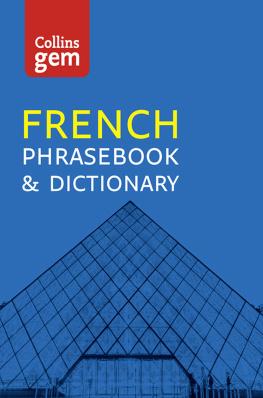Copyright 2008 by McGraw-Hill Education. All rights reserved. Except as permitted under the United States Copyright Act of 1976, no part of this publication may be reproduced or distributed in any form or by any means, or stored in a database or retrieval system, without the prior written permission of the publisher. ISBN: 978-0-07-159197-3 MHID: 0-07-159197-4 The material in this eBook also appears in the print version of this title: ISBN: 978-0-07-159196-6, MHID: 0-07-159196-6. eBook conversion by codeMantra
Version 1.0 All trademarks are trademarks of their respective owners. Rather than put a trademark symbol after every occurrence of a trademarked name, we use names in an editorial fashion only, and to the benefit of the trademark owner, with no intention of infringement of the trademark.
Where such designations appear in this book, they have been printed with initial caps. McGraw-Hill Education eBooks are available at special quantity discounts to use as premiums and sales promotions, or for use in corporate training programs. To contact a representative please visit the Contact Us page at www.mhprofessional.com. TERMS OF USE This is a copyrighted work and McGraw-Hill Education and its licensors reserve all rights in and to the work. Use of this work is subject to these terms. Except as permitted under the Copyright Act of 1976 and the right to store and retrieve one copy of the work, you may not decompile, disassemble, reverse engineer, reproduce, modify, create derivative works based upon, transmit, distribute, disseminate, sell, publish or sublicense the work or any part of it without McGraw-Hill Educations prior consent.
You may use the work for your own noncommercial and personal use; any other use of the work is strictly prohibited. Your right to use the work may be terminated if you fail to comply with these terms. THE WORK IS PROVIDED AS IS. McGRAW-HILL EDUCATION AND ITS LICENSORS MAKE NO GUARANTEES OR WARRANTIES AS TO THE ACCURACY, ADEQUACY OR COMPLETENESS OF OR RESULTS TO BE OBTAINED FROM USING THE WORK, INCLUDING ANY INFORMATION THAT CAN BE ACCESSED THROUGH THE WORK VIA HYPERLINK OR OTHERWISE, AND EXPRESSLY DISCLAIM ANY WARRANTY, EXPRESS OR IMPLIED, INCLUDING BUT NOT LIMITED TO IMPLIED WARRANTIES OF MERCHANTABILITY OR FITNESS FOR A PARTICULAR PURPOSE. McGraw-Hill Education and its licensors do not warrant or guarantee that the functions contained in the work will meet your requirements or that its operation will be uninterrupted or error free. Neither McGraw-Hill Education nor its licensors shall be liable to you or anyone else for any inaccuracy, error or omission, regardless of cause, in the work or for any damages resulting therefrom.
McGraw-Hill Education has no responsibility for the content of any information accessed through the work. Under no circumstances shall McGraw-Hill Education and/or its licensors be liable for any indirect, incidental, special, punitive, consequential or similar damages that result from the use of or inability to use the work, even if any of them has been advised of the possibility of such damages. This limitation of liability shall apply to any claim or cause whatsoever whether such claim or cause arises in contract, tort or otherwise.
Contents
INTRODUCTION
This French-English bilingual dictionary is especially designed to help the English-speaking student learn basic French and may also be used to help the French-speaking student learn basic English. Approximately 3,500 main vocabulary entries have been compiled in this useful reference. To highlight idiomatic expressions and shades of meaning, the dictionary also contains hundreds of subentries.
Because beginning language students often need more than a simple translation, this dictionary also presents information on the correct usage of entry words. At least one example sentence (followed by a translation) demonstrates the use of each entry word in context. Verbs are listed in their infinitive form and are conjugated in the present tense within each verb entry. Because the conjugated forms of irregular verbs can differ greatly from their infinitives, each form has its own individual entry. For example, you might look up vais (I go). The entry reads: vais [VAY] je vais (see aller) You can then look up aller (to go) to find the meaning and complete conjugation of the verb.
The typography of this dictionary, also designed with beginning learners in mind, allows students to clearly distinguish the various parts of the entries. Entry words are in boldface type, while parts of speech and translated sentences are in italics. Between the French-English and English-French portions of the dictionary, an 18-page section contains drawings illustrating 174 common words in 21 categories that include sports, birds, insects, food, transportation, and animals. Each drawing is labeled both in French and English. At the back of the book, a series of appendices provide metric conversions and a quick reference to useful words like months, days of the week, parts of the body, and more.
HOW TO USE THIS DICTIONARY
This dictionary provides more information than just the simple translation of a word.
Entries will also tell you how to pronounce words, what parts of speech they are, and how to use them in a sentence. When a word has more than one possible translation, all the translations are given. When looking up a word, the entire entry should be read in order to determine the most appropriate translation.
THE ENTRIES
In the French-English section of the dictionary, entries follow this format: 1.
French word. This is in boldface type, making it easy to spot.
Whenever a masculine noun also has a feminine form, the feminine ending follows directly in parentheses. 2. Pronunciation. To help say the entry word correctly, a simple pronunciation guide follows each entry. The Pronunciation section below explains the use of these guides. Part of Speech. Part of Speech.
This label indicates whether the entry is a noun, verb, adjective, etc. Abbreviations used for parts of speech are: n., noun; v., verb; adj., adjective; adv., adverb, prep., preposition; m., masculine; f, feminine; pl., plural; s., singular. 4. Definition. English definition(s) explain the meaning of the entry word. Conjugation. Conjugation.
If the entry word is a verb, it will be conjugated in the present tense. 6. Subentries. Sometimes there are subentries, to explain the meaning of words or expressions derived from the entry word. As in main entries, these feature a label identifying the part of speech and an English definition. French sentence(s). French sentence(s).
This shows the correct use of the entry or subentry word. Where a word has various uses, more than one sentence is provided. 8. English translation. Every example sentence in French is then translated into English.  to swim
to swim  O nagez-vous en t? Where do you swim in the summer? The English-French section follows the same format, except that verbs are not conjugated in the entries.
O nagez-vous en t? Where do you swim in the summer? The English-French section follows the same format, except that verbs are not conjugated in the entries. 












 to swim
to swim  O nagez-vous en t? Where do you swim in the summer? The English-French section follows the same format, except that verbs are not conjugated in the entries.
O nagez-vous en t? Where do you swim in the summer? The English-French section follows the same format, except that verbs are not conjugated in the entries.